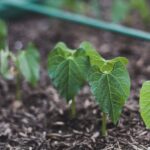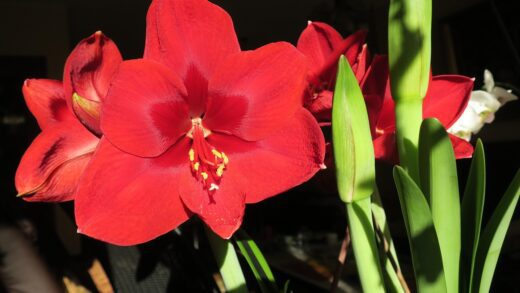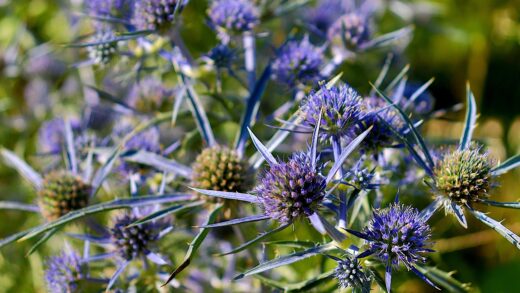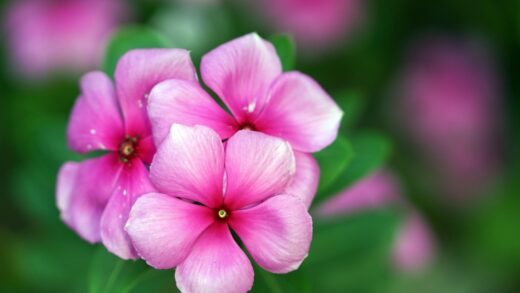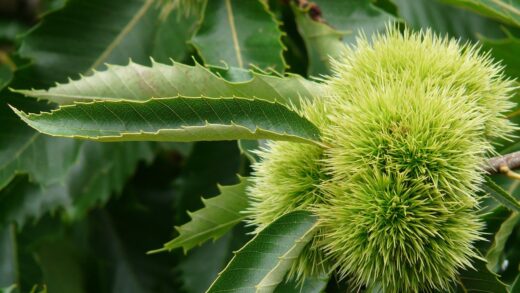Understanding the unique life cycle of the Anatolian colchicum is the absolute cornerstone of its successful cultivation in any garden setting. Unlike the vast majority of bulbous plants, this species exhibits a fascinating and somewhat counter-intuitive growth pattern known as hysteranthy. This means that the foliage and flowers appear at completely different times of the year, a critical fact that dictates every aspect of its care, from watering to feeding. The beautiful, goblet-shaped flowers emerge directly from the bare earth in the autumn, providing a surprising splash of colour when most other plants are beginning to fade, while the leaves only appear the following spring to conduct photosynthesis.
The autumn flowering period is a moment of pure spectacle, as the lilac-pink blossoms seem to materialize from nowhere, unencumbered by any foliage. These flowers are the plant’s primary reproductive effort for the season, standing on delicate, pale tubes that are often mistaken for stems. It is essential during this time to simply enjoy the display and protect the delicate flowers from physical damage, such as heavy foot traffic or aggressive raking. Any intervention at this stage should be minimal, as the plant is drawing on energy reserves stored deep within its corm to produce this floral show.
Come spring, the plant’s energy-gathering phase begins with the emergence of broad, strap-like, glossy green leaves. This foliage is vitally important, as its sole purpose is to photosynthesize and create the sugars that will be stored in the corm for the summer dormancy and the subsequent autumn’s flowering. It is a common mistake for gardeners to find this foliage untidy and be tempted to remove it prematurely, which is a fatal error for the plant’s long-term health. The leaves must be allowed to grow, mature, and eventually yellow and wither away entirely on their own schedule, a process that should be complete by early summer.
The summer months mark the plant’s critical dormant period, a time of rest and preparation beneath the soil surface. After the spring foliage has completely died back, the corm enters a state of inactivity, waiting for the cooling temperatures and autumn rains to signal the start of a new flowering cycle. During this time, the corm is particularly vulnerable to rot if the soil remains excessively wet, which is a key consideration for irrigation and site selection. Understanding this complete cycle—autumn flowers, spring leaves, summer dormancy—is the fundamental principle that guides all successful care practices for this remarkable plant.
Site selection and soil preparation
Choosing the correct location for planting is a decision that will have a lasting impact on the health and vigor of your Anatolian colchicum for years to come. These plants thrive in a position that receives full sun to light, dappled shade, with a particular emphasis on sunlight during the spring months. This is because the foliage requires ample light to photosynthesize effectively and build up the necessary energy reserves in the corm. A spot under deciduous trees can be ideal, as the corms will be exposed to full sun in spring before the tree’s canopy leafs out, and then benefit from some shade and drier conditions during their summer dormancy.
More articles on this topic
The soil itself is perhaps the single most critical environmental factor for the long-term success of Colchicum cilicicum. They demand exceptionally well-draining soil, as their corms are highly susceptible to rot if they sit in waterlogged conditions, especially during their summer dormancy. Heavy clay soils must be amended significantly with organic matter like compost, leaf mould, and coarse grit or sand to improve their structure and porosity. The goal is to create a friable, humus-rich medium that holds sufficient moisture for growth but allows all excess water to drain away freely.
Before planting, take the time to prepare the chosen site thoroughly, as this initial effort pays significant dividends. Dig the area over to a depth of at least 25 to 30 centimeters, removing any weeds, rocks, or other debris that you encounter. This is the perfect opportunity to incorporate those vital soil amendments, spreading a generous layer of compost and grit over the surface and working it deeply into the existing soil. Aim for a final soil consistency that is loose and crumbly, which will allow the roots to establish easily and ensure that water never pools around the base of the corms.
The ideal soil pH for Anatolian colchicum is in the neutral to slightly alkaline range, which is a common characteristic for plants originating from limestone-rich regions. If you know your garden soil to be particularly acidic, a light application of garden lime during the preparation phase can be beneficial. A simple soil test can provide valuable information about both the pH and the existing nutrient levels, allowing you to make more targeted amendments. Ultimately, creating this optimal soil environment is a proactive step that prevents many future problems and encourages robust, healthy growth.
A seasonal maintenance calendar
Autumn is the season of reward, where the primary task is to appreciate the stunning floral display and provide minimal, careful maintenance. As the flowers emerge, ensure they are not smothered by fallen leaves from surrounding deciduous trees; gently clear debris to allow the blooms to shine. This is not a time for fertilization or heavy watering, as the plant is running on stored energy, and excess moisture can damage the delicate flower tubes. Mark the location of the clumps clearly with a plant tag, as it is surprisingly easy to forget their exact position once the flowers and subsequent spring leaves have vanished.
More articles on this topic
Winter care is largely a matter of passive protection, as the corms are fully dormant and quite hardy in their preferred growing zones. In regions with particularly harsh winters or poor drainage, a light mulch of bark chips or chopped leaves can provide an extra layer of insulation against extreme cold and temperature fluctuations. This mulch also has the added benefit of suppressing winter annual weeds and gradually improving the soil structure as it breaks down. The most important task in winter is to ensure the area does not become a swamp, so avoid planting in low spots where water collects and freezes.
Spring heralds the critical growth phase for the foliage, and all maintenance activities should be focused on supporting this development. As the large, green leaves emerge, ensure they have access to adequate sunlight and are not being crowded out by more aggressive neighboring plants. This is the time to apply a balanced, low-nitrogen fertilizer to fuel the corm for the upcoming seasons. It is absolutely crucial to resist any temptation to cut back or “tidy up” the foliage, even as it starts to look a bit ragged later in the season; every leaf is a vital solar panel for the plant.
As the calendar moves into late spring and early summer, the focus shifts to allowing the plant to enter dormancy gracefully. The leaves will begin to yellow and wither, which is a natural and necessary process of senescence, during which the plant retracts all valuable nutrients back into the corm. Once the leaves have completely browned and shriveled, they can be gently pulled away or raked off the soil surface. From this point on, through the height of summer, the area should be kept relatively dry to mimic the plant’s native Mediterranean climate and prevent the dormant corms from rotting in warm, wet soil.
Handling and toxicity considerations
It is impossible to discuss the cultivation of any Colchicum species without addressing the significant issue of its toxicity, a characteristic that demands respect and careful handling. All parts of the Anatolian colchicum plant—the corm, leaves, flowers, and seeds—contain the powerful and toxic alkaloid known as colchicine. This substance can be harmful if ingested and can also cause skin irritation in sensitive individuals, making it imperative to always wear gloves when handling the corms or any other part of the plant. This simple precaution prevents accidental exposure and ensures a safe gardening experience.
The presence of colchicine has important implications for where these plants are situated within a garden landscape, particularly in households with curious children or pets. While the plant’s toxicity generally deters animals, it is wisest to avoid planting them in areas where pets are known to graze or dig, or in play areas frequented by young children. Educating family members about the plant’s nature is a responsible part of its cultivation. Placing them in a mixed border among other plants, rather than as an isolated specimen in an open area, can also help to minimize the risk of accidental contact.
Despite its toxicity to mammals, the presence of colchicine provides the plant with a significant natural defense against many common garden pests. Rodents such as voles, mice, and squirrels, which often plague other bulbous plants like tulips and crocuses, typically leave Colchicum corms entirely alone. This built-in protection makes them a wonderfully low-maintenance choice for gardens where such pests are a persistent problem. This natural resistance means you can enjoy their beautiful autumn display without the need for deterrents or protective cages.
When the time comes to divide clumps of corms, the safety precautions become even more important due to the direct handling of the most potent part of the plant. Always choose a well-ventilated area for this task and wear durable gardening gloves. Use clean tools to separate the corms and be mindful not to touch your face or eyes during the process. After you have finished planting, wash your hands and tools thoroughly with soap and water to remove any potential residues, ensuring that all plant debris is disposed of responsibly.
Long-term clump management
Anatolian colchicum is a resilient and long-lived plant that, once established in a suitable location, will slowly multiply and form impressive, dense clumps over the years. This natural expansion is a sign of a healthy, thriving colony, and for several years, it requires no intervention at all. As the clump grows larger, the floral display in autumn becomes progressively more spectacular, with dozens of blooms emerging from a single area. This self-sustaining growth is one of the most rewarding aspects of cultivating this species, as it puts on an increasingly grand show season after season.
However, after many years, typically in the range of five to seven, you may begin to notice a decline in the flowering performance of a mature clump. The number of flowers may decrease, or the individual blossoms might appear smaller and less vigorous than in previous years. This is a classic sign of overcrowding, where the corms have multiplied to the point that they are competing with each other for space, water, and essential nutrients in the soil. When you observe this gradual decline in flowering, it is nature’s signal that the time has come to lift and divide the clump to rejuvenate it.
The process of division is straightforward and should be undertaken during the plant’s summer dormancy, typically in July or August, after the leaves have completely died back and the corms are resting. Carefully excavate the entire clump using a garden fork, being sure to dig deeply and widely enough to get underneath the corms without spearing them. Once the mass of corms is lifted, you can gently crumble the soil away and separate the individual corms and smaller offsets from the main cluster. It is a task that requires a gentle touch to avoid bruising or damaging the corms.
After separating them, inspect the corms and discard any that show signs of rot, disease, or damage. You can then replant the healthiest, largest corms immediately back into the prepared area or in new locations around the garden, following the standard planting depth and spacing guidelines. The smaller offsets can also be planted; they may take a year or two to reach flowering size but are a fantastic way to increase your stock for free. This periodic division not only invigorates the original planting, ensuring a return to prolific flowering, but also allows you to propagate these beautiful autumn gems throughout your garden.
Companion planting strategies
Strategically choosing companion plants for Anatolian colchicum can elevate its beauty and solve some of the practical challenges presented by its unique life cycle. Since the flowers appear on bare stems in autumn, they can look somewhat stark on their own. Pairing them with low-growing, mat-forming groundcovers provides a beautiful green carpet that contrasts wonderfully with the pinkish-lilac blooms. Consider plants like creeping thyme (Thymus serpyllum), bugleweed (Ajuga reptans), or hardy plumbago (Ceratostigma plumbaginoides), whose own late-season flowers can complement the colchicum’s color palette.
Another effective strategy is to use companion plants to disguise the colchicum’s large and sometimes untidy foliage as it begins to fade in late spring and early summer. As the broad leaves start to yellow and flop over, emerging perennials can grow up and around them, effectively hiding their decline from view. Medium-sized perennials like hostas, hardy geraniums (Geranium spp.), or lady’s mantle (Alchemilla mollis) are excellent choices. Their own lush foliage will fill the space, maintaining visual interest in the border long after the colchicum leaves have performed their function and disappeared.
It is also wise to select companions that share similar cultural requirements, particularly regarding soil and water needs. Since colchicum demands well-drained soil and a drier period in summer, pairing it with drought-tolerant perennials is a recipe for success. Plants native to Mediterranean climates, such as lavender (Lavandula), sedum (Hylotelephium spp.), and ornamental grasses like blue fescue (Festuca glauca), are ideal partners. This ensures that your irrigation practices benefit the entire planting scheme, rather than creating conditions that favor one plant at the expense of another’s health.
Finally, think about extending the season of interest by interplanting colchicum with other bulbs that flower at different times. You could plant spring-flowering bulbs like daffodils (Narcissus) or species tulips (Tulipa spp.) nearby. These will provide color and life in the spring while the colchicum foliage is at its peak, and then they too will enter dormancy around the same time in summer. This layered planting approach creates a dynamic and ever-changing display, ensuring that the area remains visually engaging from the first crocuses of spring to the last colchicum blooms of autumn.








